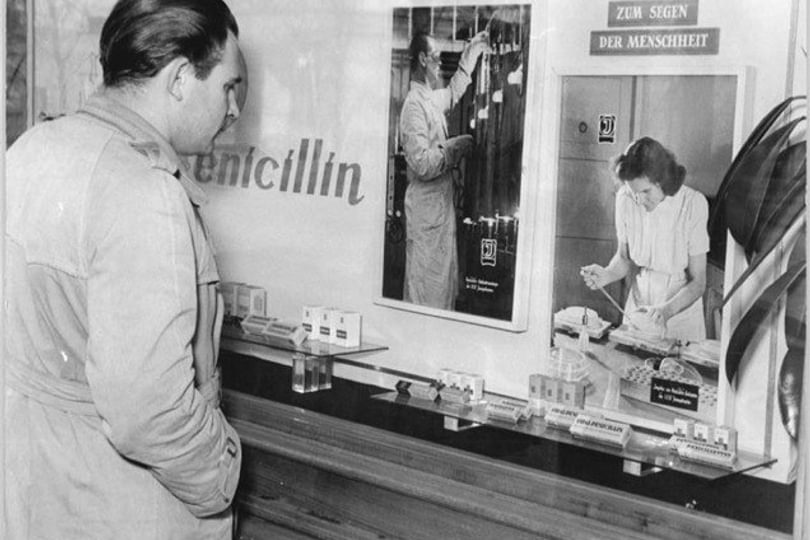
Medical leaders across Britain, including representatives of the Royal College of Surgeons, the Royal Society of Medicine, the Royal College of Physicians and Editors in Chief of The BMJ and The Lancet, have issued a call for the government to join the EU in its ban on preventative antibiotic treatments in groups of farm animals. With the new legislation set to come into force in 2022, when the UK's divorce from the union is expected to be long finalised, it’s possible that Britain could choose to set its own course. Unfortunately, history shows that national solo efforts will do little to tackle global challenges like climate change or anti-microbial resistance (AMR).
An historical perspective is important, as while the problem of AMR may seem new, it is in fact more than 80 years old. Five years before Alexander Fleming issued a warning about penicillin-resistant bacteria during his 1945 Nobel Prize speech, Allied physicians were already warning about spreading AMR in hospitals, air raid shelters, and naval academies.
The first mass-produced modern antibiotic – Prontosil – had entered the market only five years earlier, after which physicians, veterinarians, farmers, and patients raced to apply successive generations of powerful drugs against bacterial infections ranging from deadly typhoid and anthrax to more mundane problems like acne and halitosis. During the 1940s and 1950s, therapeutic uses were joined by an expanding array of non-therapeutic applications such as low-dosed antibiotic growth promoters (AGPs) for animals – and malnourished humans – sprays for plant protection, antibiotic food preservatives for poultry, fish, and shellfish, as well as antibiotic-laced whaling harpoons.
Unsurprisingly, this exponential rise of antibiotic use had profound effects on the microbial environment. The potential risks of rising AMR became abundantly clear during the mid-1950s when a resistant pandemic swept the planet. First detected in Australian newborn wards in 1954 and then in clinics across the globe, Staphylococcus aureus phage type 80/81 was the world’s first ‘superbug’ and caused widespread mortality and morbidity.
However, early knowledge of AMR’s border-defying hazards failed to trigger a corresponding international response. Since the 1940s, regulators have developed multiple ways of approaching antibiotic-related hazards, often differing substantially because of varying political, cultural, and economic constraints. While short-term ideological priorities and fluctuating supplies led to very uneven patterns of antibiotic use east of the Iron Curtain, varying public attitudes towards state intervention also resulted in fragmented Western policies. US regulators shied away from imposing statutory antibiotic restrictions, opting for voluntary campaigns for ‘rational’ antibiotic use. By contrast, Swedish and Norwegian officials were far more comfortable with imposing a high degree of control over doctors’ prescription practices. It was a similar story within the European Economic Community (EEC) when it came to agricultural antibiotic use: whereas deep-rooted cultural concerns made West German regulators launch campaigns against antibiotic residues in food, their British counterparts instead focused on restricting farmers’ access to medically-relevant antibiotic growth promoters in a bid to combat AMR. The legacy of these differing approaches is the international patchwork of wildly varying antibiotic use we see today.


So what can we learn from past reforms? Firstly, attempting to deal with AMR by cutting it up into convenient regulatory slices doesn’t really work. Take the example of agricultural antibiotics: the same products used on farms are also used in hospitals but can be subject to completely different regulations. Efforts to cut back their use in one sector might be successful, but they can still be subject to overuse in another, making even the best-regulated drugs in one sector prone to resistance selection elsewhere. In Europe, regulators tried to overcome this illogical separation and protect the effectiveness of medically relevant antibiotics by banning AGPs during the 1970s and between 1997 and 2006. But even this approach suffered from a lack of big-picture thinking and the failure to tackle another fundamental issue: that antibiotic misuse is driven by both demand and supply. By narrowly focusing on farmers, opportunities were missed to regulate the veterinarians and pharmaceutical firms supplying the same drugs – with the boundaries between growth promotion and therapeutic and prophylactic use frequently blurring. This focus on narrow reforms is now also haunting the American FDA. We’ve seen the same story in human medicine, with ‘irrational’ patients being blamed for antibiotic overuse, rather than the medical professionals and pharmaceutical companies supplying them.
Secondly, no nation is a microbial island, and national antibiotic regulation will always have limited impacts. Nation states have powerful tools like taxes, regulations, and enforcement to influence antibiotic use within their borders, but even the most concerted of these efforts have failed to halt spreading microbes and resistance genes. The lack of international policy coordination has also repeatedly led to situations in which weak regulations in one country undermined reform efforts in others, or enabled black and grey drug markets to flourish – most recently in the case of legal Chinese polymyxin exports, which are illegally being used as AGPs on Indian farms. As exemplified by the gradual restriction of AGPs in Europe between 1971 and 2006, we need trans- and international antibiotic reforms to stand any chance of impacting the global supply chains driving antibiotic consumption and AMR. This is why the UK’s hesitancy to commit to the EU’s antibiotic plans post-Brexit is so worrying. Even though loosening regulations to facilitate production and trade with other countries may seem an attractive short-term prospect, it not only threatens to break with the only transnational antibiotic stewardship coalition worldwide (the EU) but may also undermine UK citizens’ microbial safety in the medium- to long-term.
While disagreement on appropriate policy interventions may well continue, it is clear that more rather than less international coordination is what is needed if we are to curb the global burden of AMR. So far, one of the most effective ways of achieving this has been the standardisation of international surveillance efforts. In the US, EU, Japan, and other high-income areas the regular collection and publication of data on AMR and antibiotic consumption has been a source of constant reform pressure since the late 1990s. Recent WHO attempts to standardise international AMR surveillance and definitions of what constitutes a ‘critically important antibiotic’ are further important steps in the right direction.
However, simply standardising surveillance will not be enough. What is also needed is a greater willingness to share international burdens when it comes to developing more sustainable forms of antibiotic use. Recent decades have seen growing disparities emerge between stagnating or diminishing antibiotic use in some high-income countries and rising antibiotic use in many low- and middle-income countries. Rather than pointing the finger, we need to remember the roots of many forms of AMR and antibiotic overuse in high-income countries. It is, for example, easy to forget that expanding agricultural antibiotic use is being driven by industrial systems that originate in the West. This does not mean that there is no need for global antibiotic reform. However, it does mean that high-income countries have an historical responsibility to not just propose international stewardship declarations but also support countries with less resources to develop their own sustainable frameworks of human and non-human antibiotic use. Greater awareness of regulation attempts across the decades and the limits of national solo efforts are crucial if current decision-makers are to develop more robust and sustainable regulations for the decades ahead.
Read Dr Kirchhelle's correspondence on this issue in Nature: https://www.nature.com/articles/d41586-018-07454-2
Dr Claas Kirchhelle is a member of the Oxford Martin School’s Programme on Collective Responsibility for Infectious Disease and a Junior Research Fellow at Wolfson College. He has published numerous articles on the history of antibiotic use and regulation. His book ‘Pyrrhic Progress. Antibiotic Regulation In Anglo-American Food Production (1949-2013)’ is in press with Rutgers University Press and will appear in summer 2019.
This article is based on the following published papers:
- Claas Kirchhelle, 'Pharming Animals: a global history of antibiotics in food production (1935-2017)', Palgrave Communications 4/96 (2018), doi: 10.1057/s41599-018-0152-2
- Claas Kirchhelle, ‘Swann Song. British Antibiotic Regulation in Livestock Production (1953-2006)’, Bulletin of the History of Medicine 92/2 (2018), pp. 317-350, doi: 10.1353/bhm.2018.0029.
This opinion piece reflects the views of the author, and does not necessarily reflect the position of the Oxford Martin School or the University of Oxford. Any errors or omissions are those of the author.
